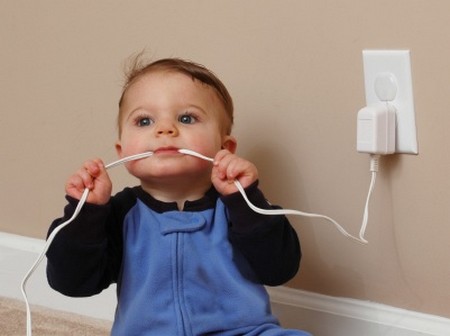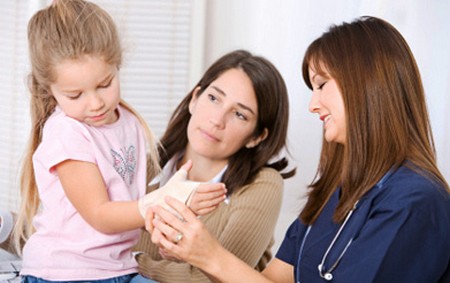Children are particularly vulnerable to accidents in the home, most of which can be avoided by careful planning. As a child develops, you will always have to be one step ahead to foresee the likely areas of danger. Don’t be upset if you are constantly having to change your home to accommodate your growing child and his needs.
The hazards
Newborn
While your baby is immobile, there is little harm that he can do to himself, but you should always keep him in earshot in case he starts to make unfamiliar noises. Keep him warm: remember that young babies, whose sensitivity to temperature has not yet developed, are at risk of getting hypothermia. Make sure that their room, like that of the old, is kept above 61° F (16° C).

Thoroughly disinfect anything the baby comes into contact with, do not let your dog lick his face and do not put his bouncer or reclining chair on a high surface or it may tip off.
Toddlers
Once your baby can move independently, he will want to explore and you will need to make sure that the world in which you allow him to explore is safe. It is important to put all objects you do not want him to touch high up out of his way and to lock up anything that could harm him.
Everything on his level should be made safe, including sockets, radiators and wastepaper baskets. Make sure floors and furniture are splinter-free and put safety catches on all low-level cupboards containing fragile or potentially dangerous objects. Complete a CPR Certification Columbus to be able to save a life when needed.
Paint anything he might chew with lead-free paint, screw free-standing bookcases and cabinets to the wall so that he can not pull them on top of himself and do not use dangling tablecloths that are tempting to pull. Never leave the room unattended when the iron is on or put hot drinks near the edge of a table where he can reach them.
It is simpler if you keep your child in a playpen until he can walk – if he has always been put in one he will not object to it. It is also sensible to put children into safety harnesses, in high chairs, push-chairs or prams as soon as they can sit up. You should also put a child in reins when you go for walks so that you do not constantly have to shout ‘Stop! Come here!’ or ‘No!’ after him.

Equipment
Always buy equipment that has met approved safety standards and use it according to the manufacturer’s instructions. Keep toys and bicycles clean and check them regularly to see they have not become dangerous. Fit all windows above ground level with safety catches or detachable bars and cover all full-size windows with safety film or replace them with ones made of safety glass. Do not leave chairs or beds under windows and never give children an electric blanket.